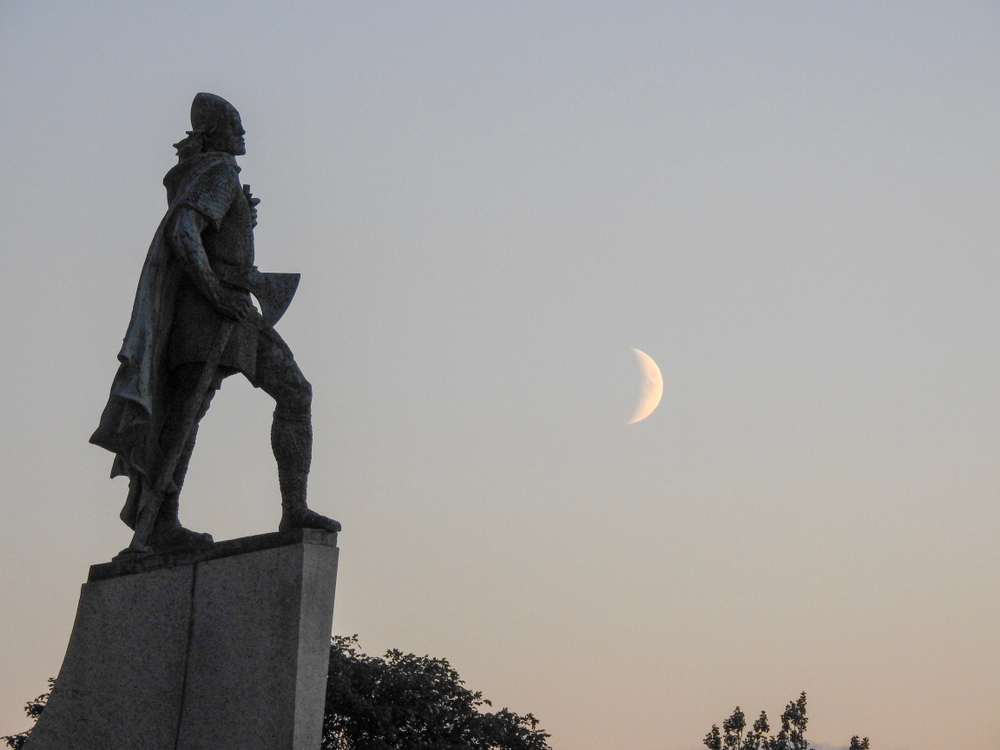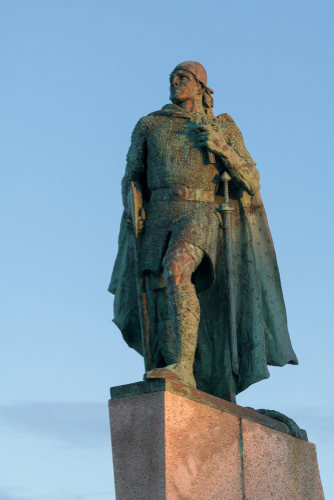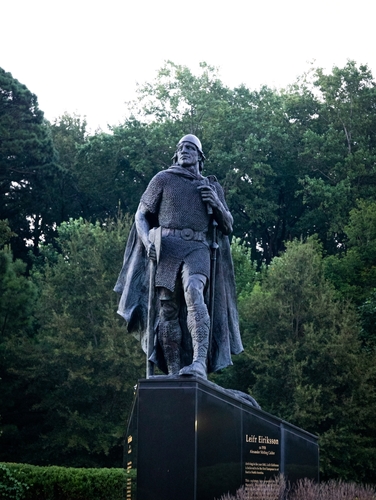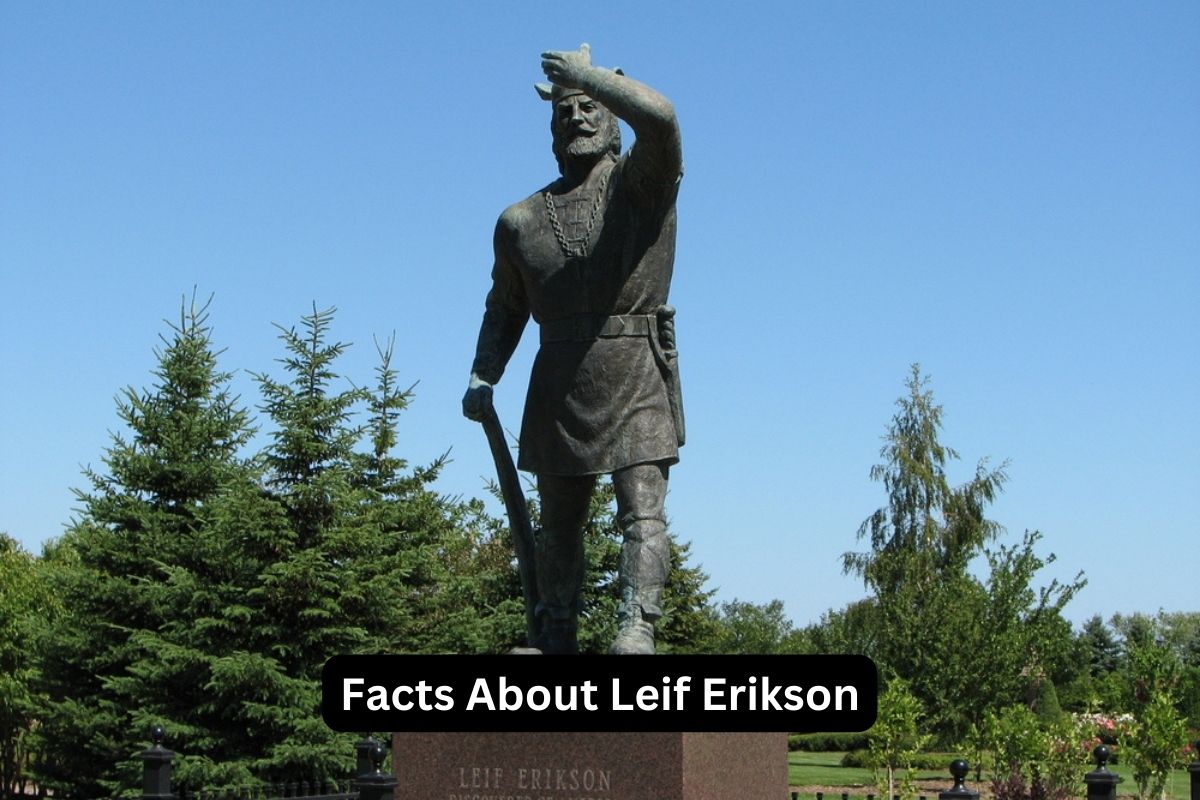Leif Erikson, born around 970 CE, was a Norse explorer hailing from Iceland and raised in Greenland. He is best known for his pioneering voyage to North America around the year 1000 CE, during the Viking Age.
Erikson is credited with being one of the first Europeans to set foot on the continent, pre-dating Christopher Columbus by nearly five centuries.
His exploration and naming of Vinland, a region he discovered, mark a significant early chapter in the history of European exploration of the New World.
Despite limited written records, his legacy is celebrated in Iceland, Norway, and the United States, and archaeological evidence supports his historic voyages.
Leif Erikson Facts
1. Born in Iceland around 970 CE
Leif Erikson’s exact birthplace in Iceland is not definitively known, but it is widely believed that he was born around the year 970 CE.
Also Read: Facts About Viking Women
His father, Erik the Red, had been exiled from Norway and settled in Iceland. Leif grew up in the harsh and rugged landscapes of Iceland, which likely contributed to his adventurous spirit.

2. Son of Erik the Red, a Greenlandic explorer
Leif Erikson’s father, Erik the Red, was a famous Norse explorer and the founder of the first Norse settlements in Greenland.
Erik the Red earned his nickname due to his fiery red hair and beard. Leif’s upbringing in a family of explorers and settlers influenced his own desire to explore new lands.
3. Sailed to North America around 1000 CE
Leif Erikson is best known for his voyage to North America, which is believed to have occurred around the year 1000 CE.
He sailed from Greenland to what is now the eastern coast of Canada. It’s important to note that this voyage happened nearly 500 years before Christopher Columbus’s famous journey to the Americas.
Also Read: Timeline of Leif Erikson
Erikson’s exploration of North America, particularly the area he called Vinland, represents a significant early chapter in European exploration of the New World. His expedition demonstrates the seafaring skills and courage of the Norse people during the Viking Age.
4. Named the area he explored Vinland
Leif Erikson is credited with naming the area he explored in North America as “Vinland.” The name “Vinland” is derived from the Old Norse word “Vinland” or “Vineland,” which means “Land of Wine” or “Land of Grapes.”
Erikson named it this way because his expedition encountered wild grapes growing in the region. The presence of grapes suggested to the Norse explorers that this land had the potential for agriculture and settlement.

5. One of the first Europeans in North America
Leif Erikson’s voyage to North America makes him one of the first, if not the first, European to set foot on the continent. His explorations predate other notable European explorers, including Christopher Columbus, by several centuries.
This achievement is a testament to the seafaring skills and navigational prowess of the Norse people during the Viking Age. Erikson’s journey represents a crucial chapter in the history of European exploration in the New World.
6. Converted to Christianity
Leif Erikson and his family played a significant role in the Christianization of Greenland. While the Norse people were traditionally pagan, Erikson and his family converted to Christianity.
This religious conversion was likely influenced by contact with Christian missionaries in Europe and was part of a broader trend of Christianization in the Norse settlements of Greenland and Iceland during that era. Erikson’s conversion reflects the cultural and religious changes taking place in the Viking world during the early 11th century.
7. Followed by other Norse explorers like Thorfinn Karlsefni
Leif Erikson’s voyages to North America were not isolated events. He was followed by other Norse explorers, most notably Thorfinn Karlsefni. Thorfinn Karlsefni was an Icelandic explorer who married Gudrid, the widow of one of Leif Erikson’s brothers.
He embarked on an expedition to Vinland, likely seeking to establish a more permanent settlement. However, like many Norse efforts in North America, it faced challenges and was eventually abandoned.

8. Limited written records; knowledge comes from sagas
There are no direct written records by Leif Erikson himself about his voyages or discoveries. Most of what is known about him comes from later Icelandic sagas and historical accounts.
Two main sagas, the Saga of the Greenlanders (Grœnlendinga saga) and the Saga of Erik the Red (Eiríks saga rauða), provide some of the primary historical sources for information about Erikson and other Norse explorers.
These sagas were written in the 13th century, several centuries after the events they describe, and are considered valuable but potentially embellished sources of historical information.
9. Celebrated in Iceland, Norway, and the United States
Leif Erikson is celebrated as a cultural hero in both Iceland and Norway. In Iceland, there is a national holiday known as “Leif Erikson Day,” which is observed on October 9th. In Norway, he is recognized for his role in Norse exploration.
In the United States, particularly in areas with a significant Norwegian-American population, Leif Erikson is celebrated during Norwegian-American heritage events and festivals. Leif Erikson Day is also recognized on October 9th in the United States.
10. Archaeological evidence supports his voyages
While written records are limited, archaeological evidence has provided strong support for the existence of Norse settlements in North America. Excavations at L’Anse aux Meadows in Newfoundland, Canada, have uncovered the remains of Norse structures, tools, and artifacts dating to the Viking Age.
This archaeological evidence confirms the presence of Norse explorers in North America and lends credibility to the accounts in the sagas regarding Leif Erikson’s voyages and the establishment of temporary settlements in the region. These findings have reinforced the historical significance of Erikson’s explorations in North America.
